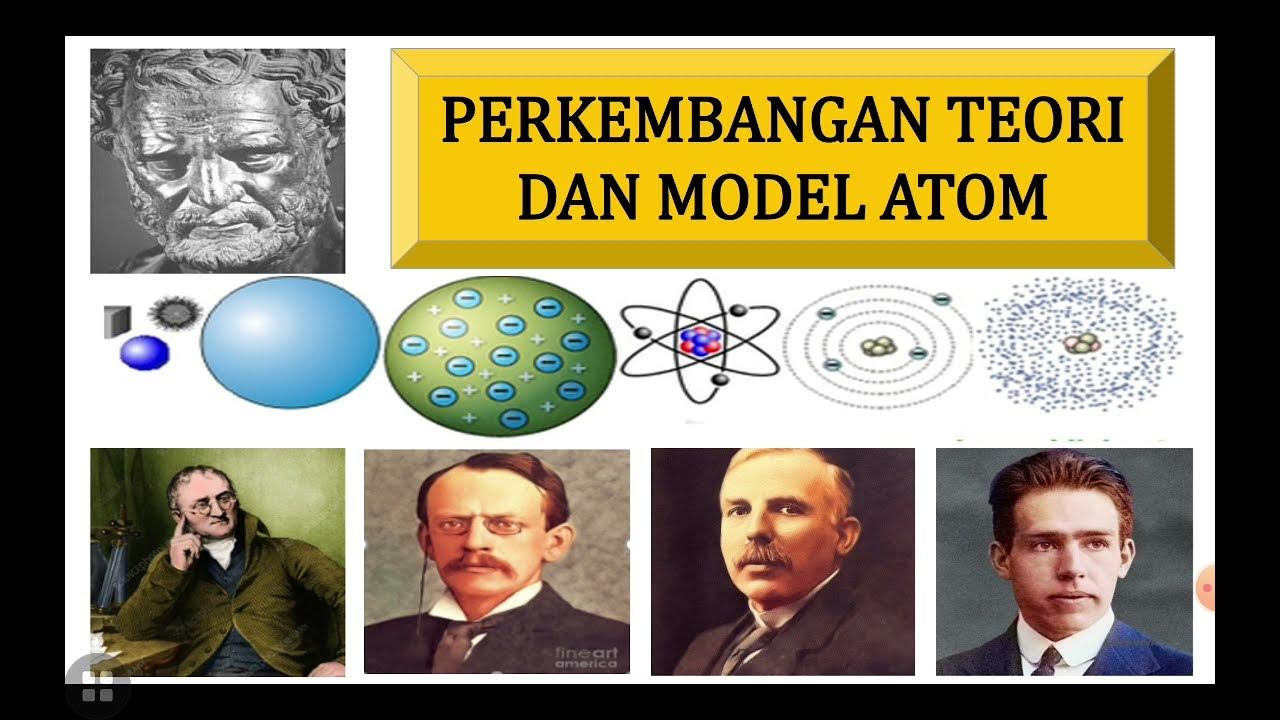Dalton's Atomic Theory
Summary
TLDRThis video explains the key concepts of John Dalton's atomic theory. Dalton proposed that elements are made of indivisible particles called atoms, which cannot be created or destroyed in chemical reactions. He stated that atoms of the same element have identical masses and properties, while atoms of different elements vary. Dalton also introduced the idea that chemical reactions involve the rearrangement of atoms, and compounds form through the combination of different types of atoms. The video also touches on isotopes, where atoms of the same element can have different nuclear properties.
Takeaways
- 🧑🔬 John Dalton proposed that elements consist of small particles called atoms.
- 🔒 Dalton believed atoms were indivisible, although we now know they consist of protons, neutrons, and electrons.
- 🔄 Atoms cannot be created or destroyed in a chemical reaction; they are simply rearranged.
- ⚛️ Chemical reactions are rearrangements of atoms, as seen in reactions like hydrogen reacting with fluorine to form hydrogen fluoride.
- 🧩 Compounds are formed by the combination of two or more different kinds of atoms.
- 🌱 An example of a compound is ammonia, which contains one nitrogen atom and three hydrogen atoms.
- 📊 Atoms of different elements have different masses and properties, like aluminum and fluorine, which behave differently.
- 💡 Metals like aluminum tend to lose electrons, while nonmetals like fluorine tend to gain electrons.
- 🧬 Dalton believed atoms of the same element are identical, but isotopes (like carbon-12 and carbon-14) show that atoms can differ in nuclear properties.
- 🔑 Isotopes have the same chemical properties but different nuclear properties, affecting their behavior in nuclear reactions.
Q & A
What is Dalton's atomic theory?
-Dalton's atomic theory states that elements consist of small, indivisible particles known as atoms. Atoms cannot be created or destroyed in chemical reactions, and compounds are formed by the combination of two or more different kinds of atoms.
Why did Dalton believe that atoms were indivisible?
-Dalton believed that atoms were indivisible because, at the time, the concept of smaller subatomic particles like protons, neutrons, and electrons had not yet been discovered.
How has our understanding of atoms changed since Dalton's theory?
-Our understanding of atoms has improved over time. We now know that atoms are composed of smaller particles, such as protons, neutrons, and electrons, which Dalton did not account for in his original theory.
What happens to atoms in a chemical reaction, according to Dalton?
-According to Dalton, atoms are not destroyed in a chemical reaction; they are simply rearranged. For example, in the reaction between hydrogen and fluorine to form hydrogen fluoride, the atoms are rearranged into a new compound without being destroyed.
What did Dalton believe about the formation of compounds?
-Dalton believed that compounds are formed by the combination of two or more different kinds of atoms. For example, ammonia is formed from one nitrogen atom and three hydrogen atoms.
Can atoms of the same element differ in any way?
-Yes, atoms of the same element can differ in their nuclear properties due to the existence of isotopes. Isotopes have the same chemical properties but different masses, such as carbon-12 and carbon-14.
What are isotopes, and how do they relate to Dalton's theory?
-Isotopes are variations of the same element with different numbers of neutrons. Although Dalton believed atoms of the same element were identical, isotopes show that atoms can have the same chemical properties but differ in mass and nuclear properties.
How do atoms of different elements differ, according to Dalton?
-Dalton believed that atoms of different elements have different masses and different chemical properties. For instance, an aluminum atom has different properties and mass than a fluorine atom.
What did Dalton say about the masses of atoms in different elements?
-Dalton stated that atoms of different elements have different masses. For example, aluminum has a mass number of 27, while fluorine has a mass number of 19.
How do metals and nonmetals differ in their atomic behavior according to Dalton?
-According to Dalton's ideas, metals tend to give away electrons to form positively charged ions (cations), while nonmetals tend to acquire electrons, forming negatively charged ions (anions). For example, aluminum gives away electrons to form a cation, and fluorine acquires an electron to form an anion.
Outlines

Dieser Bereich ist nur für Premium-Benutzer verfügbar. Bitte führen Sie ein Upgrade durch, um auf diesen Abschnitt zuzugreifen.
Upgrade durchführenMindmap

Dieser Bereich ist nur für Premium-Benutzer verfügbar. Bitte führen Sie ein Upgrade durch, um auf diesen Abschnitt zuzugreifen.
Upgrade durchführenKeywords

Dieser Bereich ist nur für Premium-Benutzer verfügbar. Bitte führen Sie ein Upgrade durch, um auf diesen Abschnitt zuzugreifen.
Upgrade durchführenHighlights

Dieser Bereich ist nur für Premium-Benutzer verfügbar. Bitte führen Sie ein Upgrade durch, um auf diesen Abschnitt zuzugreifen.
Upgrade durchführenTranscripts

Dieser Bereich ist nur für Premium-Benutzer verfügbar. Bitte führen Sie ein Upgrade durch, um auf diesen Abschnitt zuzugreifen.
Upgrade durchführenWeitere ähnliche Videos ansehen
5.0 / 5 (0 votes)







